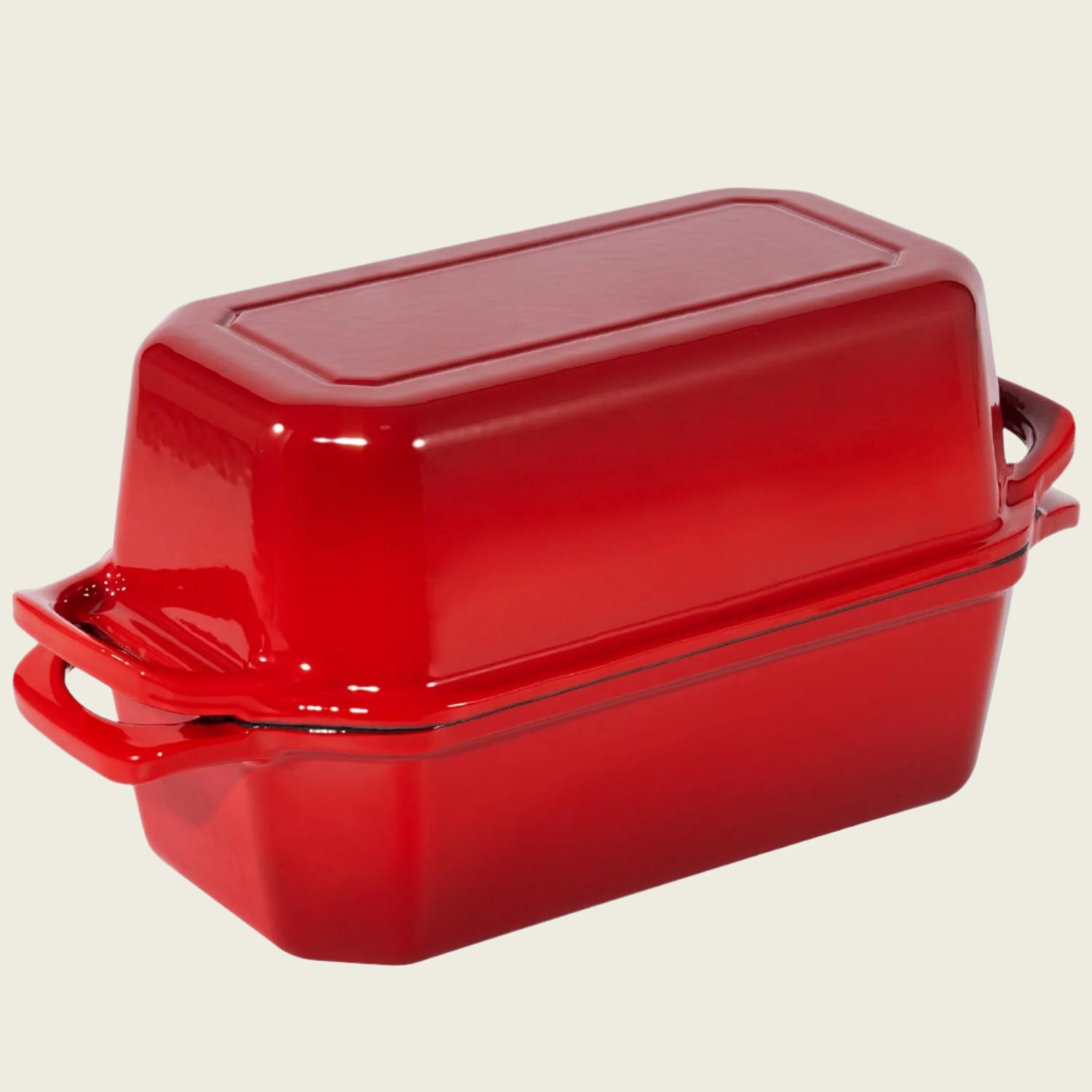Why Your Dutch Oven Is the Real MVP of Bread Baking
Share
Like many home bakers, I've been intrigued by the recent surge in Dutch oven bread baking. The stunning Instagram photos of perfectly crusty loaves had me wondering: Is this method really all it's cracked up to be? After extensive research and hands-on experience, I'm excited to share what I've learned about this fascinating baking technique.
The Science Behind the Magic
At the heart of Dutch oven bread baking lies a beautifully simple principle: the creation of a sealed environment that traps steam released from the dough during baking. This steam plays a crucial role in developing both the crust and crumb of your bread.
The trapped steam enhances what's known as the Maillard reaction—a complex chemical interaction between amino acids and sugars that gives browned food its characteristic flavor and color. But it's not just about the crust; the steam also affects the internal structure of the bread in two important ways:
- It promotes better oven spring by keeping the surface of the dough pliable longer, allowing for maximum expansion
- It influences starch gelatinization, contributing to a more moist and chewy texture
Potential Limitations and Solutions
While Dutch ovens are fantastic for bread baking, they do have some limitations. The most obvious is their round shape, which restricts you to circular loaves. While specialized cast iron bread ovens exist for different shapes, they tend to be more expensive and less versatile than standard Dutch ovens.
One common concern is the risk of burning, particularly on the bottom of the loaf. Through my research, I've discovered several effective strategies to prevent this:
- Lower the preheating temperature (try 450°F instead of 500°F)
- Use a baking sheet or aluminum foil as an insulator (avoid baking stones, which can intensify bottom heat)
- Place two layers of parchment paper under the dough
- Remove the loaf from the Dutch oven for the final 10-15 minutes of baking
The Art of Scoring
One aspect of Dutch oven bread baking that particularly fascinates me is scoring—the practice of cutting patterns into the dough before baking. While these cuts can create beautiful designs, they serve a crucial functional purpose: controlling how the bread expands during baking. Without proper scoring, bread can rise unpredictably and potentially burst in undesirable ways.
For best results, use a razor blade or specialized bread lame rather than a regular knife, which can drag and tear the dough. The depth and pattern of your scores will influence both the final shape and appearance of your loaf.
The Baking Process
The key to successful Dutch oven bread baking lies in creating the right environment. Here's what I've learned about the process:
- Preheat thoroughly (30-60 minutes at 450-500°F)
- Use parchment paper for easy transfer of the dough
- Start with high heat (450-500°F) for the first 20-30 minutes
- Lower the temperature (400-450°F) for the remaining 15-20 minutes
- Check for doneness using multiple indicators:
- Golden brown color
- Hollow sound when tapped
- Internal temperature of 206-208°F
The result should be a loaf with a crispy, robust crust and an open, airy crumb structure. The intense baking environment of a Dutch oven can even contribute to a more complex flavor profile, particularly in sourdough breads.
Beyond Bread
What truly makes a Dutch oven remarkable is its versatility. While it excels at bread baking, it's equally capable of producing stellar stews, soups, braises, and even desserts. From crusty artisan loaves to bubbling fruit cobblers, this versatile pot has earned its place as a kitchen essential.
Caring for Your Dutch Oven
To maintain your Dutch oven's performance, proper care is essential. For cleaning, avoid abrasive scrubbers that could damage the surface. Hot water and gentle scrubbing are usually sufficient. If you have an uncoated cast iron Dutch oven, remember to dry it thoroughly after washing and season it periodically to maintain its protective layer.
Final Thoughts
After this deep dive into Dutch oven bread baking, I'm more convinced than ever that this method is more than just a trend. It's a time-tested technique that allows home bakers to create professional-quality bread with minimal equipment. Whether you're an experienced baker or just starting out, a Dutch oven can be your secret weapon for creating beautiful, delicious bread at home.
